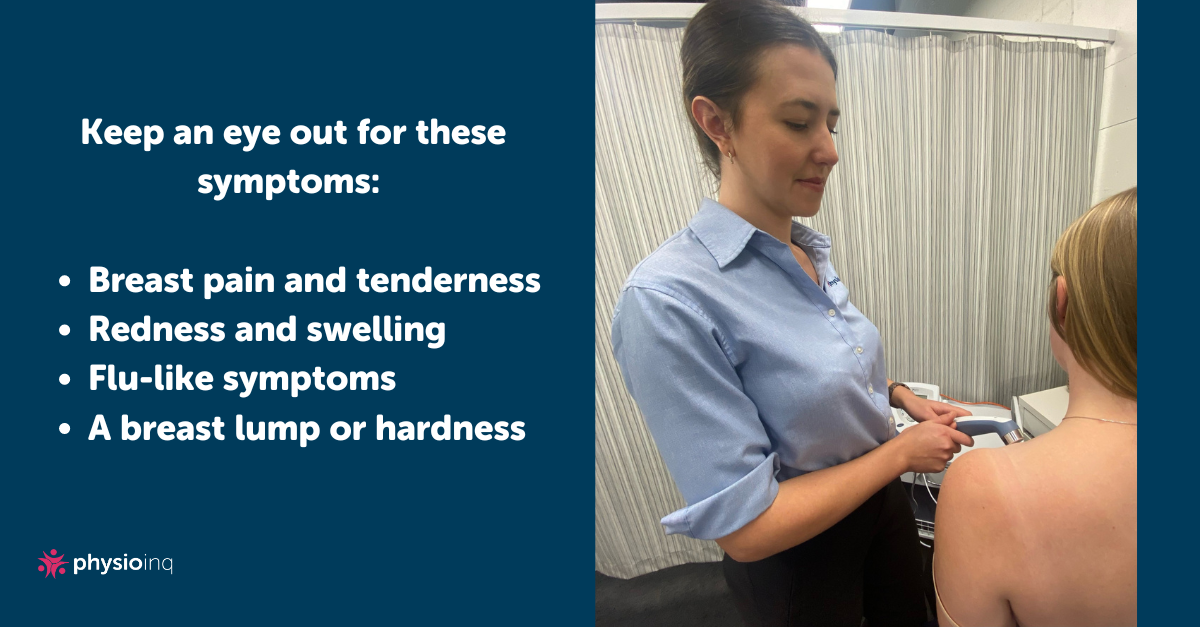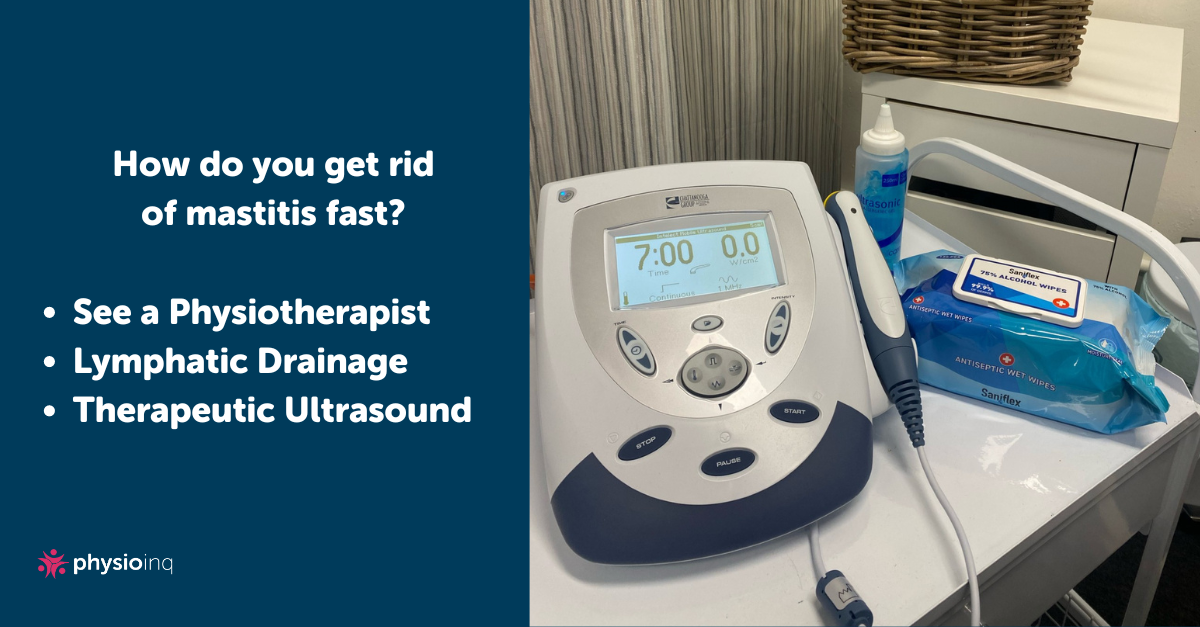Understanding and Managing Mastitis: A Comprehensive Guide
Monday, July 8, 2024
Mastitis is a common condition that can affect breastfeeding women, especially in the first four months after giving birth. It's an infection or inflammation of the breast, which can be exquisitely painful and uncomfortable. But don't worry, physiotherapy can help!
Mastitis can be caused by bacteria that can get into the breast through cracked nipples or broken skin, or it can happen if the milk ducts get blocked. This can happen because of tight clothing, problems with the baby's latch, or changes in feeding patterns.
When the milk ducts get blocked, the breast can get engorged, and that's when mastitis can set in. It's important to catch mastitis early because if it's left untreated, it can lead to more serious issues like breast abscesses, which might require surgery.
Symptoms of Mastitis
Keep an eye out for these symptoms:
- Redness and swelling
- Flu-like symptoms
- A breast lump or hardness

Does mastitis go away on its own?
While mild cases of mastitis might improve on their own, it's essential not to rely solely on spontaneous resolution. Prompt intervention and appropriate treatment can significantly expedite recovery and prevent the condition from escalating into more serious issues. It’s also common to have a reoccurrence of mastitis within a couple of weeks of the first symptoms, even if they appear to have resolved.
How do you get rid of mastitis fast?
Physiotherapy can play a vital role in accelerating the healing process using various techniques.
Method 1: Lymphatic Drainage:
This technique helps clear blocked ducts and reduce inflammation. Your physiotherapist can teach you how to perform this at home.
Method 2: Therapeutic Ultrasound:
This treatment uses sound waves to break down inflammatory cells, increase circulation and milk flow, promote healing, and reduce pain and hardness.Most women report a reduction in pain and breast lump size after 1-3 sessions.

Top Tips for Avoiding Mastitis
Be mindful of changes to feeding patterns – this could be the baby starting to sleep through the night, changes in latch and suckling due to baby having cold or blocked nose, or delayed feeds from changes in circumstances. If needed, express before your breasts become uncomfortably full.
Be careful of breast tissue compression – milk ducts are very easily compressed, which can lead to blocked ducts and mastitis. Avoid tight-fitting clothing and bras, sleeping on your front, and firm massage of the breasts.
If you have nipple trauma or concerns about babies latch, seek advice from a lactation consultant who can work with you and your baby to resolve any problems. Contact the Women's Health team at Physio Inq Marrickville on (02) 5127 5477 or book a consultation today.

